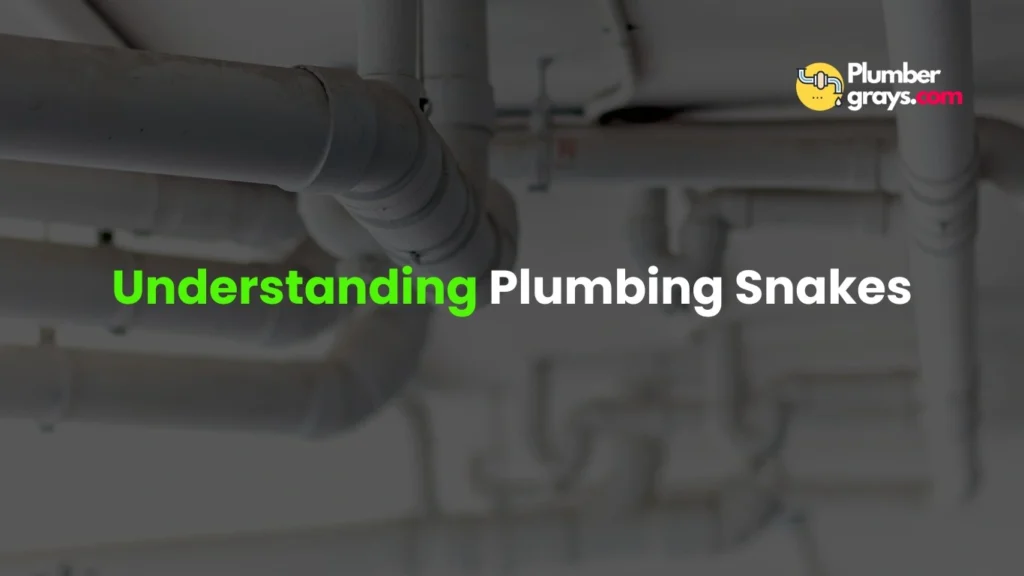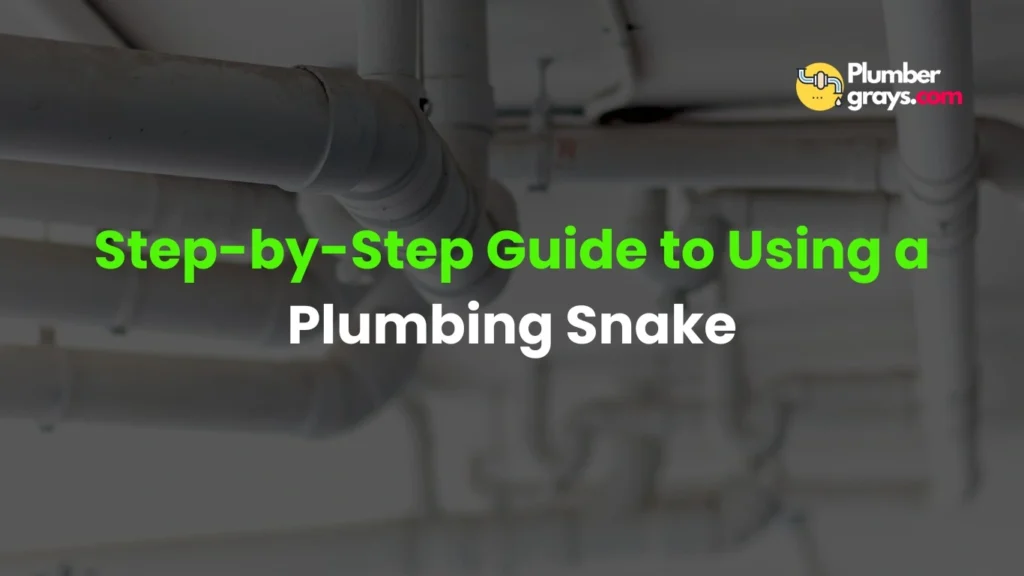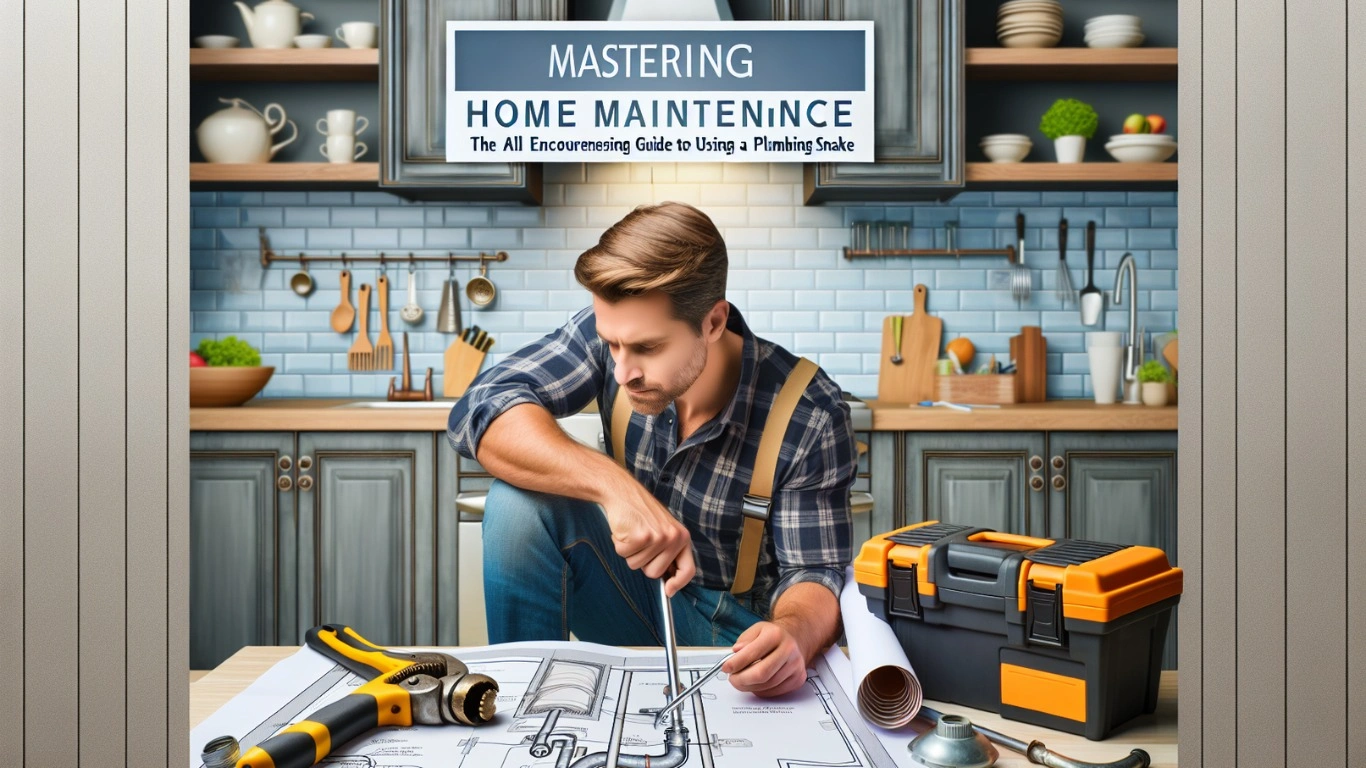Mastering home maintenance involves a deep dive into various tools and techniques that ensure our living spaces remain functional and efficient. Among these, understanding the art of using a plumbing snake stands paramount for tackling common plumbing problems such as clogs that compromise our kitchen, bathroom, and utility drainages a plumbing snake, is also recognized as a drain auger. Recognized for their versatility, plumbing snakes come in various shapes and sizes, each tailor-made for specific types of clogs, offering a hands-on, chemical-free approach to clearing blockages. From the get-go, my goal is to furnish you with an all-encompassing guide on how to use a plumbing snake, weaving in essential plumbing tips, from basic testing to intricate plumbing maintenance strategies like Water Leak Repair, Kitchen Plumbing, and even Slab Leak Detection.
In navigating through the nuances of using a plumbing snake, we’ll categorize the types of plumbing snakes and their utilities, elucidate preparatory measures to enhance effectiveness, and step-by-step illustrate the process for optimal outcomes in plumbing maintenance. What’s more, we’ll touch upon recognizing when DIY efforts fall short and professional plumbing snake service is warranted, underscoring the duality of DIY and professional strategies in slaying residential plumbing and commercial services challenges.
Understanding Plumbing Snakes

Plumbing snakes Plumbing snakes, often referred to as drain snakes or drain augers, are indispensable tools for tackling stubborn clogs that plungers can’t handle. These devices are especially useful for clearing soft blockages like hair and soap scum deep within drains. Here’s a closer look at their functionality and application:
- Design and OperationA plumbing snake comprises a thin, flexible metal cable housed within a protective drum. The cable, which can extend up to 25 feet, is designed with a corkscrew-type end to snag and pull out clogs from drains. For operation, the user manually feeds the cable into the drain until it reaches the obstruction. By turning the handle on the drum, the corkscrew end latches onto the clog, allowing it to be extracted from the pipe, and demonstrating how to use a plumbing snake effectively.
- Specialized Types:
- Toilet Auger A variant designed for toilets, known as a closet auger or toilet auger, features a rubber sleeve to protect the porcelain from scratches and is a type of manual plumbing snake.
- Electric Plumbing Snakes For tougher clogs, electric models offer motorized assistance to break through blockages more effectively, and these are often referred to as power plumbing snakes.
- Applications: Snake plumbing tools are adept at navigating a variety of drains, from kitchen sinks to shower drains, excelling in dislodging slow-moving or fully blocked pipes. These versatile tools are particularly effective for soft obstructions within the initial 15 to 25 feet of the plumbing line, but it’s crucial to remember they’re not intended for heavy items or solid blockages.
Grasping the mechanics and mastering how to use a plumbing snake is crucial for ensuring uninterrupted drainage in both homes and businesses.
Types of Plumbing Snakes and Their Uses
When exploring the realm of plumbing snakes, understanding that these instruments come in multiple designs is key. Each type is crafted to address distinct clog scenarios and plumbing hurdles, providing a comprehensive guide on how to use a plumbing snake for various situations.
- Handheld Snakes: For straightforward blockages in smaller drains like those in sinks or bathtubs, a manual snake drain is ideal. These devices are simple to operate by hand, typically featuring a crank handle, and are perfect for less demanding unclogging tasks.
- Closet Augers (Toilet Augers): A manual plumbing snake designed for toilets comes with a protective coating to safeguard the porcelain of the toilet bowl. This specialized tool is engineered for safely and efficiently clearing toilet blockages without causing damage.
- Heavy-Duty Drain Cleaning Machines: For more formidable challenges, including drum augers and sectional drain snakes, power snake options are available. These electric-powered tools are robust enough to slice through tree roots, with drum augers being motorized for heavy-duty work. Sectional drain snakes, on the other hand, offer adaptability as they can be pieced together to the necessary length, making them a powered snake solution for a variety of plumbing predicaments.
- Flat Tape Snakes: Sink snakes are the go-to for smaller pipes, typically less than 2 inches in diameter, and are adept at clearing out the flexible piping found in sinks and showers. Their design is tailored to effectively maneuver through tight bends and narrow spaces.
Learning how to use a plumbing snake is crucial for anyone looking to handle a variety of clogs, from light obstructions in small drains to heavy blockages in extensive piping systems. Grasping the distinct functions and appropriate uses of these tools is key to conducting safe and successful plumbing upkeep and troubleshooting.
Preparatory Measures Before Using a Plumbing Snake
Before embarking on using a plumbing snake, it’s crucial to take some preparatory steps. To ensure a smooth and safe process, here’s a detailed guide on what steps to follow:
Gathering Necessary Materials and Tools
- Drain Snake: The primary tool for the task.
- Protective Gear: Safety glasses and gloves to protect against debris and chemicals.
- Clearing Accessories: For an efficient cleaning routine, gather essentials such as a bowl or shallow bucket, rags, and old towels for clean-up. Additionally, having a plug wrench for tubs and showers is advisable, with paper towels being optional yet useful for quick tidying.
Safety Measures and Preparatory Steps
- Wear Protective Clothing: Prioritize your safety by donning safety glasses and gloves before commencing any plumbing work to protect against potential hazards such as splashback or debris.
- Remove Obstructions: When learning how to snake a drain, start with sink drains by removing the P-trap. Lay old towels beneath the sink, place a receptacle to catch any spillage and use rags to loosen the plastic nuts manually. For tubs, extract the drain cover with a screwdriver and employ a plug wrench to unscrew the drain in a counterclockwise direction.
- Flush the Drain: During the cleaning process, if the drain has been exposed to chemicals, ensure to flush it thoroughly with water. This step is crucial to prevent any adverse reactions with the plumbing snake that might lead to splashback or damage.
Deciding on Access Points
- Direct Approach or Through P-Trap: To effectively tackle deeper clogs, decide whether to snake directly through the drain or to remove the P-trap, which can provide easier access and is a fundamental step in understanding how to use a drain snake.
- Sink Stopper Removal: When tackling a clogged drain from above, it’s crucial to remove the sink stopper first. This ensures that when you learn how to use a snake drain, the tool can pass through without any obstructions.
By adhering to these preparatory steps, you’re laying the groundwork for a more effective and secure experience in learning how to use a plumbing snake, equipping yourself to proficiently address the blockage.
Step-by-Step Guide to Using a Plumbing Snake

Confronted with a challenging blockage? Utilizing a plumbing snake can be an incredibly efficient method. Follow this step-by-step guide on how to use a plumbing snake to ensure you handle the job with precision.
Step-by-Step Guide to Using a Plumbing Snake
- Preparation
- Lay down old towels or shirts around the work area to catch any spillage.
- Wear protective gloves to safeguard your hands from debris and bacteria.
- Insertion and Maneuvering
- Carefully introduce the auger end of the snake into the drain, being cautious not to apply excessive force, as this is a key step in understanding how to use a drain snake effectively.
- Initiate the process by gently turning the handle, simultaneously continuing to guide the snake further down the drain. This technique is essential when learning how to use a snake, as it helps the cable to progress and maneuver through the twists and turns of the plumbing.
- Upon meeting resistance or sensing that the cable has engaged with the clog, cease advancing the snake. This is a critical juncture in mastering how to use a plumbing snake, indicating you’ve reached the target.
- Dislodging the Clog
- Employ a gentle counter-clockwise rotation of the handle. This deliberate action is pivotal when learning how to use a drain snake, as it enables the corkscrew tip to grasp the blockage effectively.
- Carefully pull the snake back towards you, bringing the clog out of the drain.
- After eliminating the blockage, ensure you run water down the drain to thoroughly flush out any lingering debris, adhering to best cleaning practices.
- To maintain hygiene, clean the plumbing snake meticulously with water and a disinfectant, removing any traces of waste material and upholding cleaning standards.
- Repeat if Necessary
- Should the drain remain clogged, it’s advisable to repeat the process. Understanding how to use a plumbing snake effectively means recognizing that clogs can consist of multiple blockages, sometimes necessitating several attempts for complete removal.
Mastering how to use a plumbing snake to clear clogs is key to keeping your plumbing system in top shape. For clogs that persist or seem complex, it’s wise to consult a professional to avoid damage to your plumbing infrastructure.
After-Use Care and Maintenance Tips
Post-clearance, ensure you follow these after-use care and maintenance tips to extend the life of your plumbing snake, preparing it for future use with ease.
Post-Use Cleaning and Maintenance
- Cleaning: Directly after use, run the plumbing snake under hot water to dislodge any debris and hair that may carry bacteria. A thorough wipe with a rag, especially around the spring and cable, is essential to prevent contaminants from being drawn back into the drum, thus maintaining the tool’s cleanliness.
- Lubrication: To prevent corrosion and guarantee smooth functionality, apply Snakeoil, gear oil, or regular motor oil to the cable. This maintenance step is vital after each use and should follow any extensive cleaning procedures to preserve your plumbing snake.
- Storage: After each use, ensure the snake is thoroughly dry before carefully coiling the cable around the drum. Employing maintenance techniques like using a storage case can shield the snake from environmental factors that might cause deterioration.
Routine Checks and Maintenance
- Inspect and Replace: Incorporate maintenance routines by regularly inspecting the plumbing snake for wear, especially the cable. Should the cable’s fluctuations exceed an inch or display signs of significant wear, it’s time to consider a replacement to preserve operational efficiency.
- Drum Maintenance: As part of your cleaning regimen, make it a habit to periodically drain the drum to prevent rust by letting excess water out. Additionally, disassemble the drum now and then to eliminate the accumulated grime, which ensures the cable glides smoothly.
- Professional Inspections: Complement your DIY efforts by scheduling professional plumbing services to inspect your system, including pipes, faucets, and fixtures. Early leak detection can avert future clogs and is a strategic addition to maintaining your plumbing tools.
By diligently following these after-use care and maintenance practices, you’re not only maintaining the longevity of your plumbing snake but also supporting the overall well-being of your plumbing system, keeping it free from clogs and in optimal working condition.
Recognizing When to Seek Professional Help
In my journey with DIY plumbing Through experience, I’ve realized the importance of acknowledging when a situation requires expert intervention. Recognizing when to enlist a skilled plumber is a critical skill.
Safety and Damage Prevention:
- Always equip yourself with safety glasses and gloves to mitigate potential hazard risks, and refrain from using chemicals before snaking a drain. If chemical drain cleaners have been used recently, it’s advisable to avoid the plumbing snake due to the danger of chemical splashback.
- When dealing with old, fragile pipes or intrusive tree roots, it’s crucial to employ a professional drain snake and the expertise of a skilled technician to prevent further damage.
When to Call a Professional Plumber:
- Main Sewer Issues: Should you encounter multiple clogged drains or a sewage backup, it’s a strong indication of a main line obstruction that requires prompt attention.
- Persistent Clogs: Tried and failed with DIY methods? Recurring clogs might indicate a deeper issue.
- Critical Area Blockages: Clogs in critical areas such as the kitchen sink or the sole bathroom necessitate immediate emergency plumbing services to restore functionality.
- Old or Fragile Pipes: Professionals can handle these with care, preventing potential breakages.
Preventive Measures:
- To prevent future clogs, avoid disposing of grease or oils down the drain, consider the installation of a grease trap, and consistently use strainers in sinks and bathtubs to maintain cleanliness.
Recognizing the right moment to call a plumber can avert potential risks and ensure that your plumbing system continues to operate at peak performance.
Conclusion
This comprehensive guide has provided insights on how to use a plumbing snake effectively to tackle stubborn clogs, as well as broader home maintenance tactics that contribute to the functionality and efficiency of your living spaces home care.
Grasping the importance of switching from DIY to professional help is crucial to avoid damage and ensure safety. This guide has equipped you with the know-how on how to use a plumbing snake and the wisdom to discern when the expertise of a professional is indispensable, thereby promoting a proactive approach to home maintenance.
FAQs
What are the steps to using a drain snake effectively?
To master the technique of how to use a drain snake, initiate the process by positioning the handle near the pipe’s entrance and rotating it with consistent motion. When you feel resistance during the rotation, it’s a sign you’ve located the clog. At this juncture, employ a combination of vertical and horizontal movements with the auger tip to fragment and dislodge the clogged material.
Should I rotate a drain snake clockwise or counterclockwise to clear a clog?
As you navigate the drain snake to the obstruction, it’s crucial to twist and pivot the tool in a counterclockwise direction. This method is a key step in how to use a snake to effectively fragment and remove the blockage from your drain, ensuring a clear flow.
What distinguishes a drain auger from a snake?
The primary distinction between a drain auger and a snake lies in their size and task-specific applications. A drain snake manual would note that a snake is generally smaller and surpasses plungers in effectiveness for dislodging clogs. It’s equipped with a helix-shaped hook that’s designed to navigate through pipes when operated by a crank. Snakes excel in extracting dense, shreddable blockages and are optimally used for narrower pipes with diameters of 1¼ to 2 inches.
How frequently should I snake my drains?
Implementing routine maintenance for your drains is wise, even if they appear unobstructed. It’s advisable to have a professional cleaning annually to prevent blockages. Additionally, executing weekly and monthly care tasks is essential to maintain your drains’ optimal performance and longevity.


Comments are closed